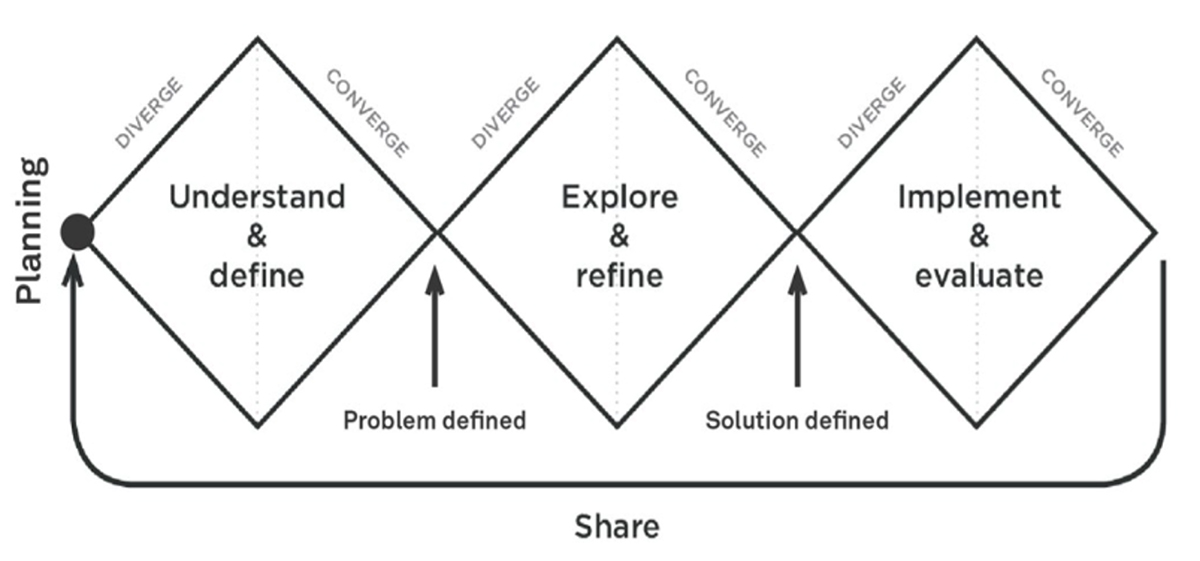About human-centred design
Use human-centred design (HCD) to improve existing or design new Queensland Government services based on an understanding of customers’ experiences, needs and expected outcomes.
What is human-centred design?
HCD is an approach to problem solving that places the needs of the people at the centre of the design process. Customers are involved all stages of the process—including research, ideation, testing, and the evaluation and refinement of possible solutions.
The HCD approach, as we define it for government, consists of 3 phases as well as planning and sharing activities.

- Planning: The who, what, when, where, and how
- Understand and define: Are we solving the right problem?
- Explore and refine: Are we solving the problem in the right way?
- Implement and evaluate: How well is the solution meeting the needs of the people?
- Sharing: How can we externalise and share our process and outcomes?
Why use HCD?
A HCD approach ensures that you are solving the right problem and coming up with the right solution by putting people at the centre of the design process. This approach has a range of benefits for customers, the people of Queensland, as well as for government.
Benefits for the people of Queensland
- Services that meet the real underlying needs of customers
- An improved customer experience of your product or service.
- Less stress and frustration when using a product or service.
- Removal of cognitive load when determining how to use services.
- Increased popularity and use of services by customers.
Benefits for government
- Provides an external, customer perspective of the problem at hand.
- Systems and services that meet customers needs tend to cost less in support.
- Can increase productivity and improve operational efficiency
- Reduces project risks of a ‘failed service’.
- Builds organisational resilience.
- Helps staff understand and build empathy for customers.
- Builds a reputation of a people-centred government.